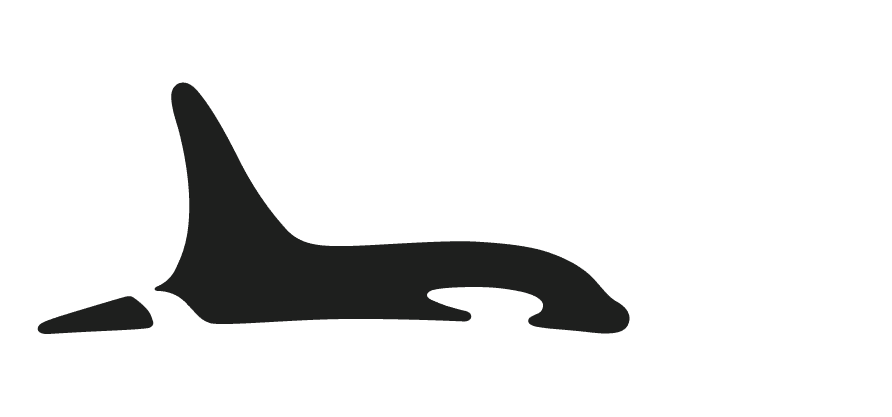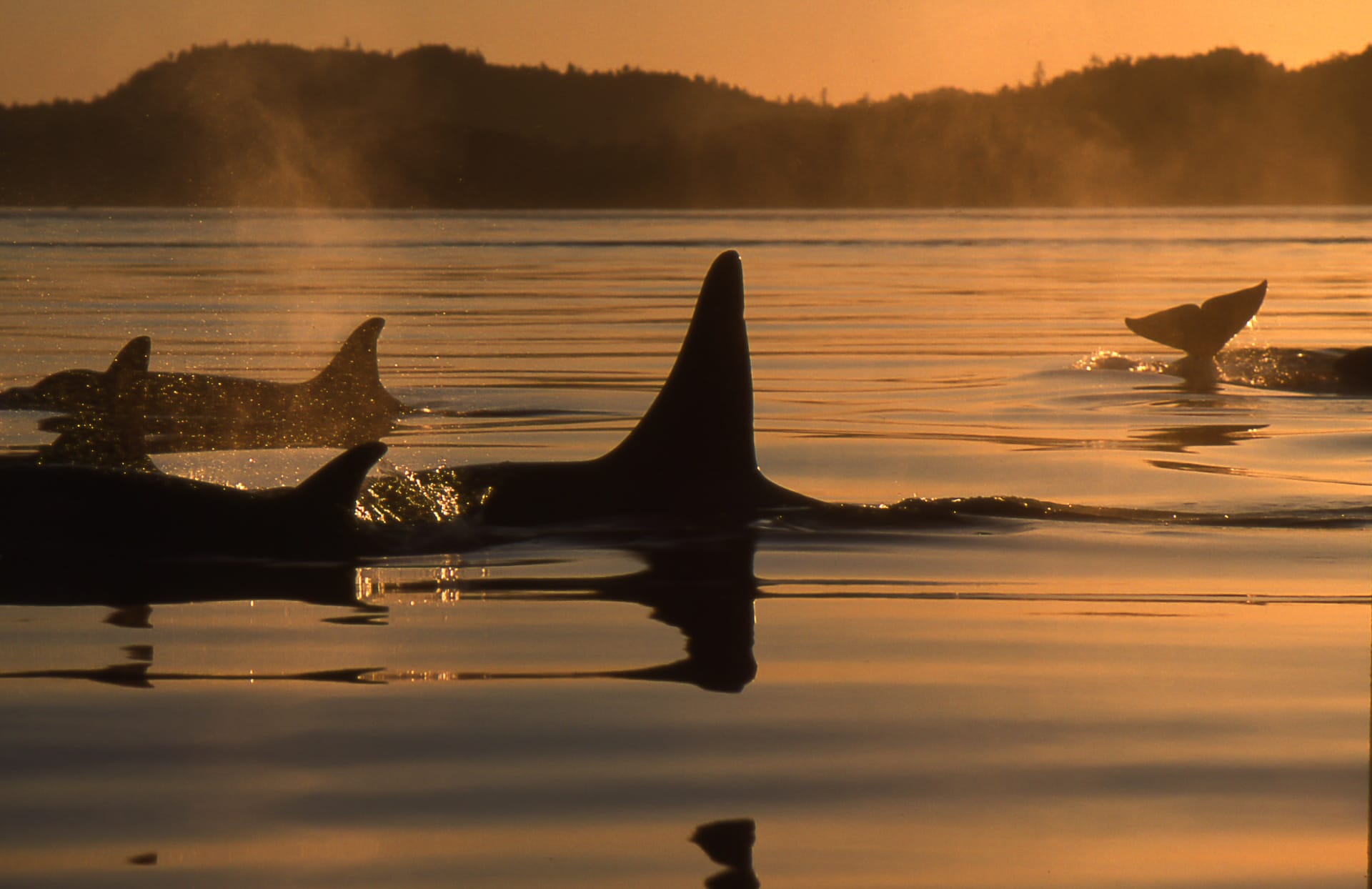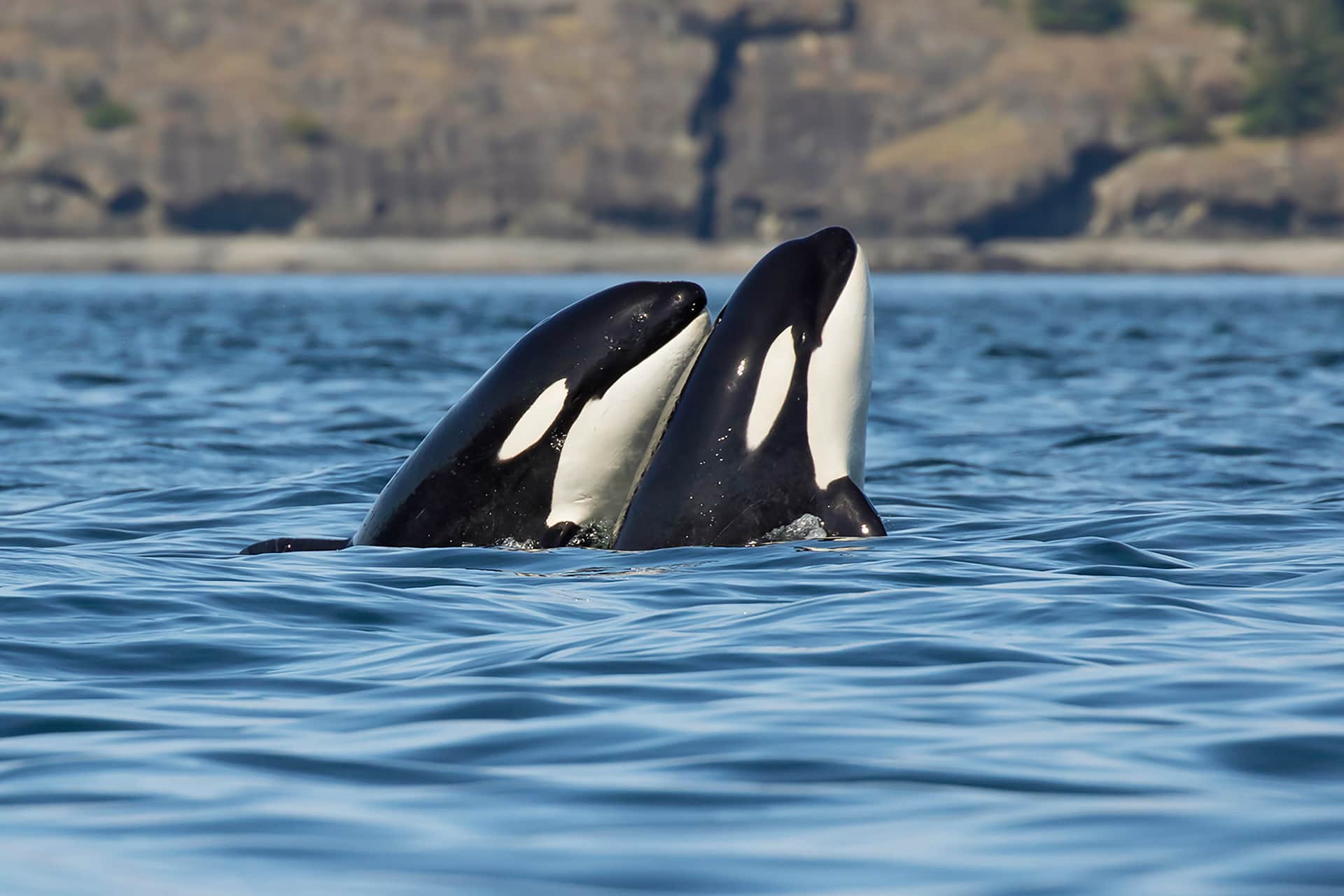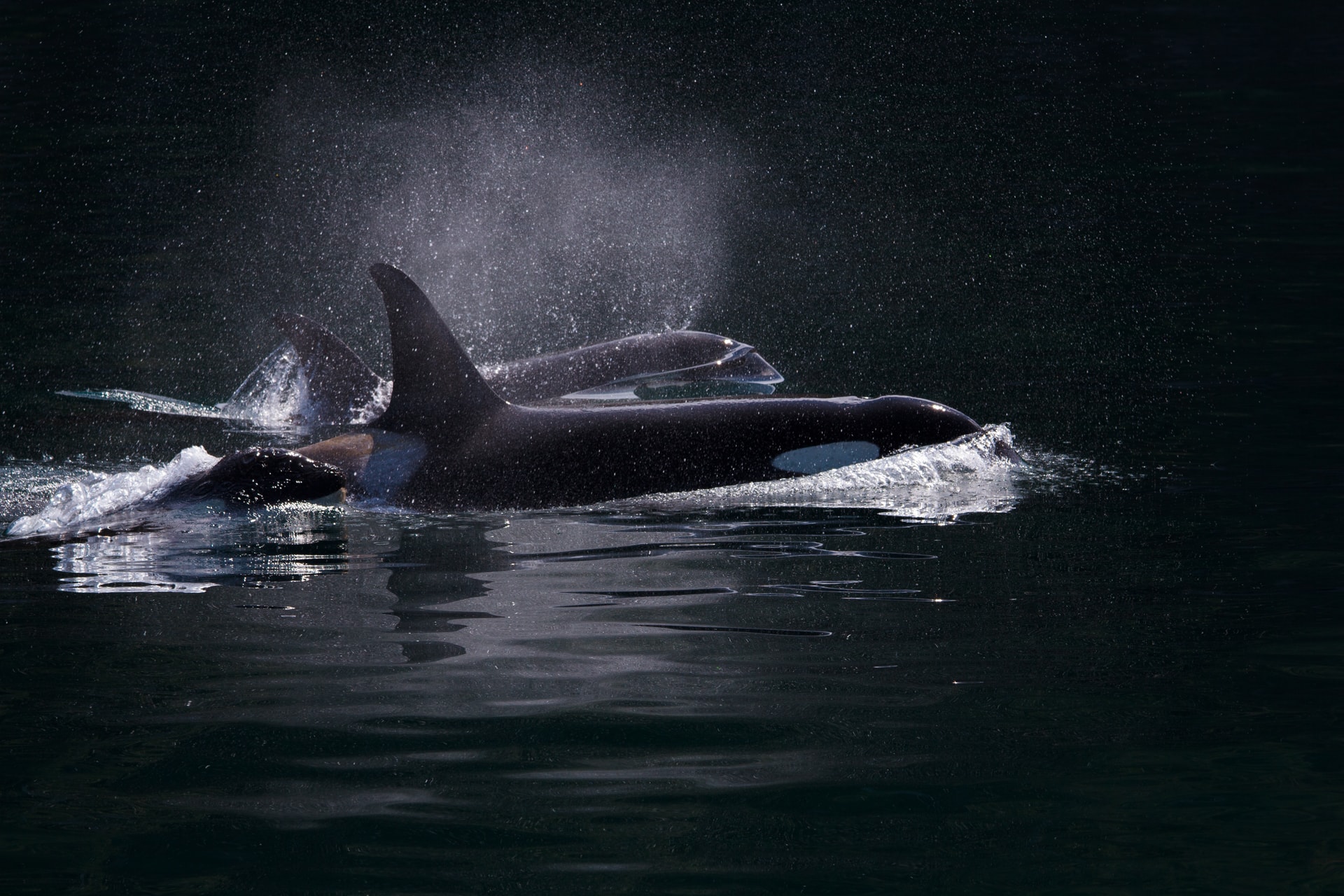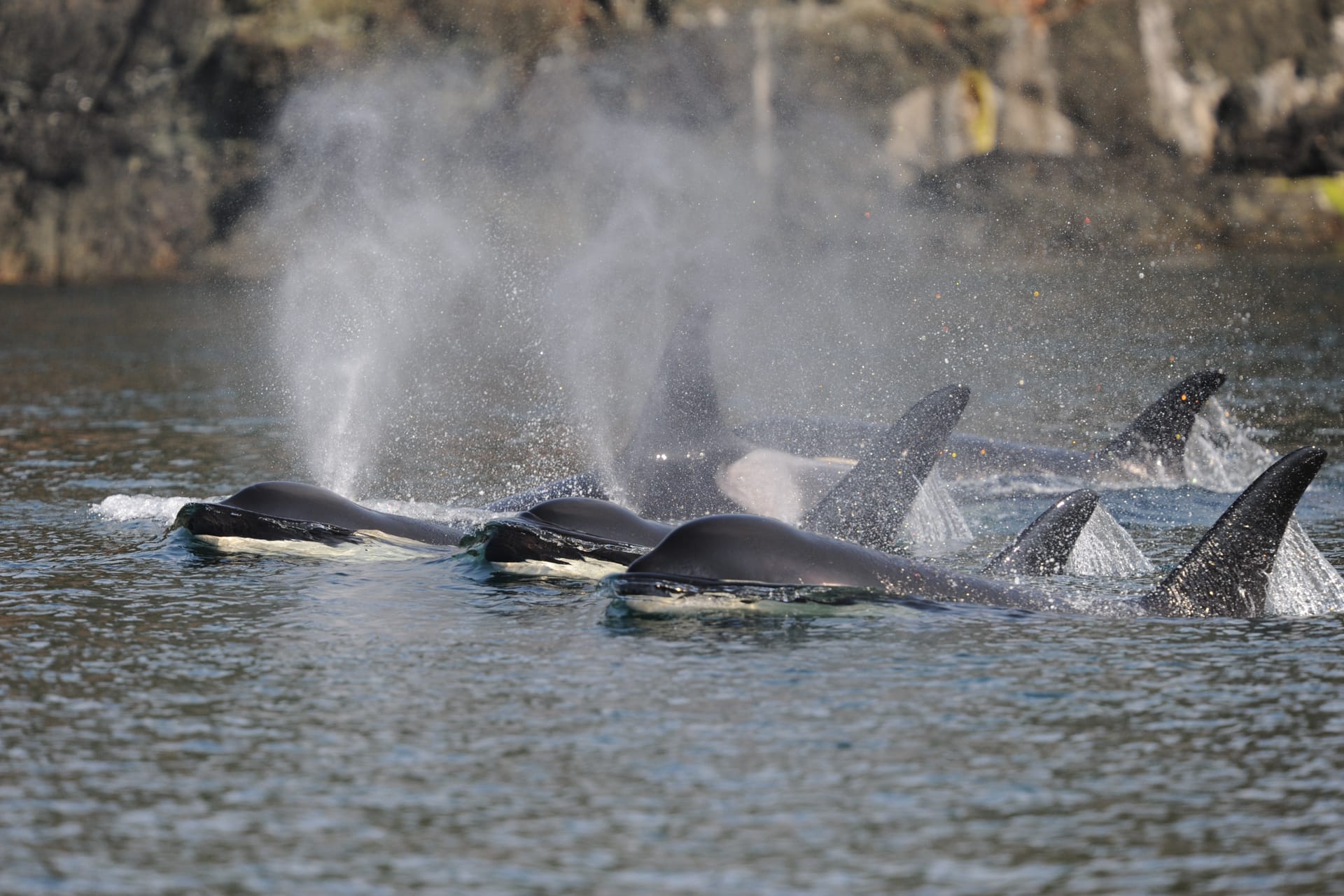
Over the last 45 years, thousands of hours have been spent collecting data on J, K and L pods, the Southern Resident killer whales. Most diet data are collected during spring/summer when they forage in the Salish Sea, close to “Orca HQ” on San Juan Island: the home base of the Center for Whale Research, co-author to a number of diet studies, as well as Wild Orca’s Dr. Giles, also a scientist with the University of Washington, whose data show Chinook are essential to these whales’ survival.
A government-funded diet study followed these whales periodically from 2004-2017 in their fall and winter foraging habitats, which included Puget Sound, and the coastal waters of Washington, Oregon and California. To collect and identify the fish species these whales are eating, researchers used two sampling methods successful in other studies: collecting fish remains that float at the surface after a successful feeding event, and/or floating fecal matter (aka orca poop!)
What fish species do these whales eat in fall and winter?
This research clearly shows that the Southern Resident killer whales truly are salmon specialists in fall and winter, with just two salmon species making up 71% of all samples. In fact, when combining salmon + steelhead—all the members of the salmonid family— this rises to 88% of the samples collected during the 14-year study.
The study reported nine species in total, four salmonids: Chinook salmon, Coho, Chum and Steelhead; plus, five from outside this family: three flat fishes—Pacific halibut, English sole and Arrowtooth flounder; as well as Lingcod, and Big Skate.
The total number of samples of non-salmonids is small, but nevertheless show that these whales can eat other species. The problem—for them, and us—is that they rarely do so. In fact, they preferentially choose Chinook salmon over the other more abundant salmon species they’re known to eat, even when Chinook is quite scarce.
This study demonstrates just how dependent these whales are on Chinook salmon. By combining their data with previous studies, these authors now estimate:
From January to August, Chinook is the most significant part of their diet—almost exclusively from April to August—with an important role through year-end. Coho salmon return in September as some Chinook runs decline, and after Coho peaks, Chum is the new salmon of choice, until the next Chinook return.
What does DNA reveal about the secret lives of Chinook?
Nearly half of the Chinook samples collected during the study can be identified through DNA to their natal, or home river—i.e., where their life started, and will end. In total, this study was able to identify Chinook from 19 different home rivers!
The DNA of 20 Chinook samples collected in Puget Sound reveals nine different rivers of origin. While the majority were “local” Chinook from North and South Puget Sound Rivers, other Chinook had traveled from as far south as the Sacramento River in California, or from as far north as the Skeena River in northern British Columbia.
This demonstrates the remarkable distances that Chinook salmon travel (up to 1,000 miles from their home river), it also reflects the genetic diversity these whales rely on. This diversity is seasonal—including salmon runs from different seasons, but from the same river—as well as varied geographical locations. This helps compensate for the natural fluctuations in salmon abundance.
These detailed data inform killer whale culture: Inherited knowledge—such as when, and where to find salmon—is passed down through the female lineage (the matriline) to subsequent generations. After co-existing with Chinook salmon for centuries, salmon fishing is now far less predictable for these whales due to the enormous impacts that humans have had on salmon populations in the last 100 years.
Where did Chinook caught off the West Coast originate?
33 outer coast Chinook samples—primarily collected off Washington State—represent 15 home rivers: the two most northerly rivers identified in this study, the Taku and Stikine (which run from northern BC into southeast Alaska), and more southern sources, such as California’s Klamath River.
90% of these West Coast Chinook samples can be grouped into one of four main river systems— the smaller interconnected rivers that feed into one main river:
- Columbia—a system so vast that rivers feeding it originate in one of three states: Washington, Oregon & Idaho,
- Puget Sound, Washington State,
- Fraser, British Columbia,
- Central Valley, California.
Previous studies identify the Columbia, Puget Sound and Fraser River systems as essential sources of Chinook for these endangered whales; this study highlights their year-round importance. The significant contribution to their fall and winter diet by California’s Central Valley Chinook is important new information.
Sadly, nearly two-thirds of the DNA samples show a U.S. home river of origin where one or more populations of Chinook are listed as “Threatened with Extinction” under the Endangered Species Act, i.e., Puget Sound, Klamath River, Sacramento River, the Columbia River and one of its important tributaries, the Snake River.
Few Snake Chinook were found in this study. They’re struggling for survival, as dams restrict access to spawning habitat. In fact, this river was just named “America’s Most Endangered River 2021″ by environmental advocacy group, American Rivers.

This new study sheds light on these whales’ year-round diet, reinforcing what has long been understood—Chinook salmon is the key to their survival. So, now that we have this updated information, what can we do with it? Knowing what these whales need to survive should be used to inform and change salmon fisheries management.
Yet, this study concluded in 2017, and catch limits for four Chinook salmon fishing seasons were subsequently set without change: all authorized by NOAA Fisheries, the federal agency responsible for fishing, but also for recovering endangered species—including Chinook salmon and the Southern Resident killer whales. This dual role puts the agency at conflict with itself, as shown in a recent press release:
“NOAA fisheries provided guidance on the structure of the 2021 salmon fisheries to address the needs of the whales while providing salmon harvest opportunities.”
Continued below...
Sadly, the whales do not get a share of those “harvest opportunities.”
With their population lower now than when listed as Endangered in 2005, there’s no indication that the whales’ needs have been addressed at all, despite the body of evidence—including this newly published NOAA-funded research—that clearly show the whales’ Chinook needs. When will these whales get their seat at the table?
Read Wild Orca’s March Statement in response to the study’s release.


